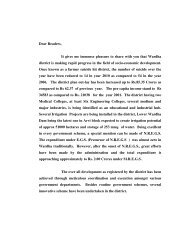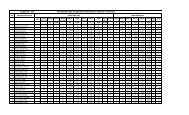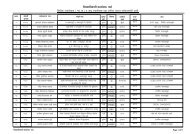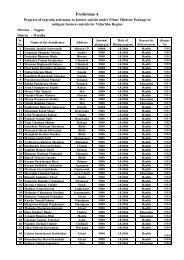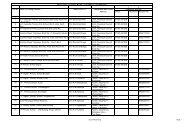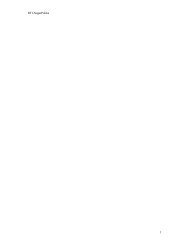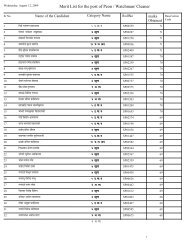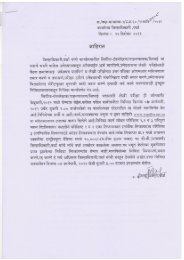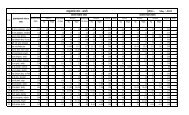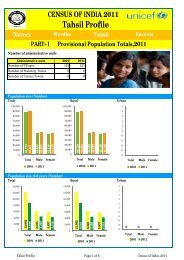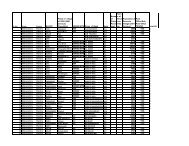Create successful ePaper yourself
Turn your PDF publications into a flip-book with our unique Google optimized e-Paper software.
<strong>Annexure</strong> - F<br />
Water Treatment<br />
Treat all water of uncertain purity before using it for drinking, food washing or<br />
preparation, washing dishes, brushing teeth or making ice. In addition to having a bad<br />
odour and taste, contaminated water can contain microorganisms that cause diseases such<br />
as dysentery, cholera, typhoid and hepatitis.<br />
There are many ways to treat water. None is perfect. Often the best solution is a<br />
combination of methods. Before treating, let any suspended particles settle to the bottom,<br />
or strain them through layers of clean cloth.<br />
Following are four treatment methods. The first three methods-boiling,<br />
chlorination and water treatment tablets-will kill microbes but will not remove other<br />
contaminants such as heavy metals, salts, most other chemicals and radioactive<br />
fallout. The final method-distillation-will removes microbes as well as most other<br />
contaminants, including radioactive fallout.<br />
a. Boiling is the safest method of treating water.<br />
Boiling water kills harmful bacteria and parasites. Bringing water to a rolling boil for 1<br />
minute will kill most organisms. Let the water cool before drinking.<br />
Boiled water will taste better if you put oxygen back into it by pouring it back and forth<br />
between two containers. This will also improve the taste of stored water.<br />
b. Chlorination uses liquid chlorine bleach to kill microorganisms such as bacteria.<br />
Use regular household liquid bleach that contains no soap or scents. Some containers<br />
warn, "Not for Personal Use." You can disregard these warnings if the label states sodium<br />
hypochlorite as the only active ingredient and if you use only the small quantities mentioned in<br />
these instructions.<br />
Add six drops (1/8 teaspoon) of unscented bleach per gallon of water, stir and let stand for<br />
30 minutes. If the water does not taste and smell of chlorine at that point, add another dose and<br />
let stand another 15 minutes. This treatment will not kill parasitic organisms.<br />
If you do not have a dropper, use a spoon and a square-ended strip of paper or thin cloth<br />
about 1/4 inch by two inches. Put the strip in the spoon with an end hanging down about 1/2<br />
inch below the scoop of the spoon. Place bleach in the spoon and carefully tip it. Drops the<br />
size of those from a medicine dropper will drip off the end of the strip.<br />
c. Water treatment purification tablets release chlorine or iodine.<br />
They are inexpensive and available at most sporting goods stores and some<br />
drugstores. Follow the package directions carefully.<br />
Note: People with hidden or chronic liver or kidney disease may be adversely affected by<br />
iodized tablets and may experience worsened health problems as a result of ingestion. Iodized<br />
tablets are safe for healthy, physically fit adults and should be used only if you lack the<br />
supplies for boiling, chlorination and distillation.<br />
70



